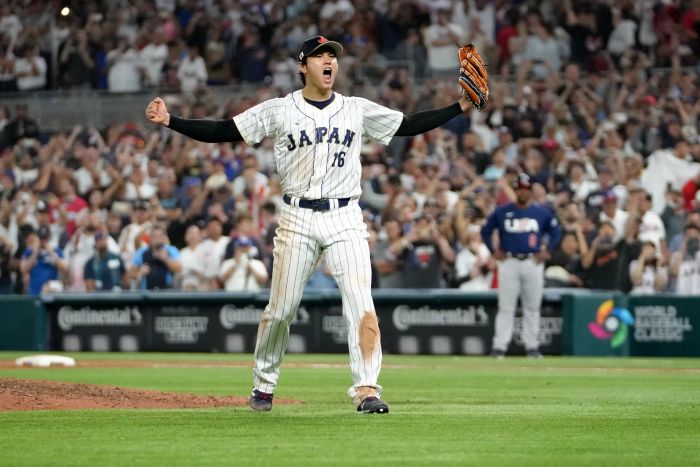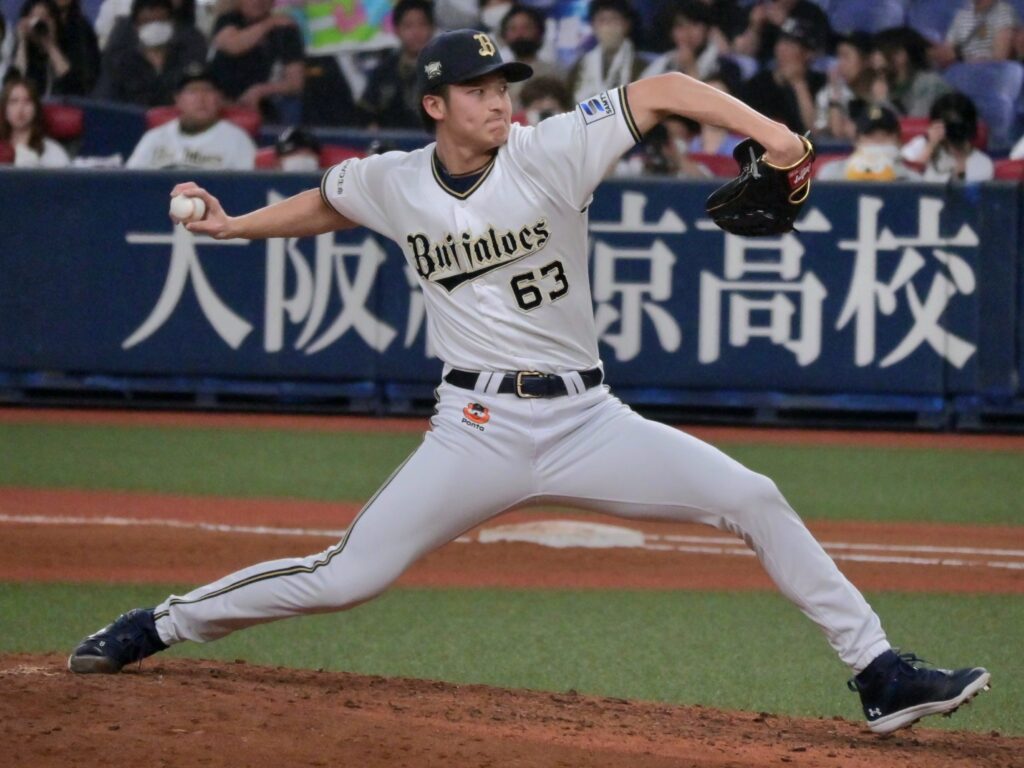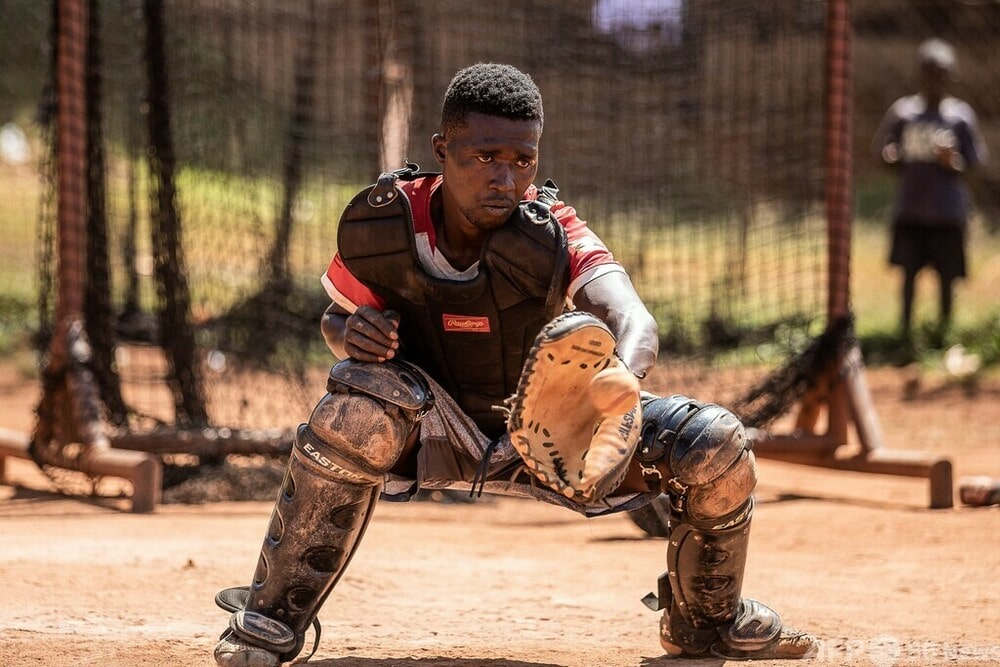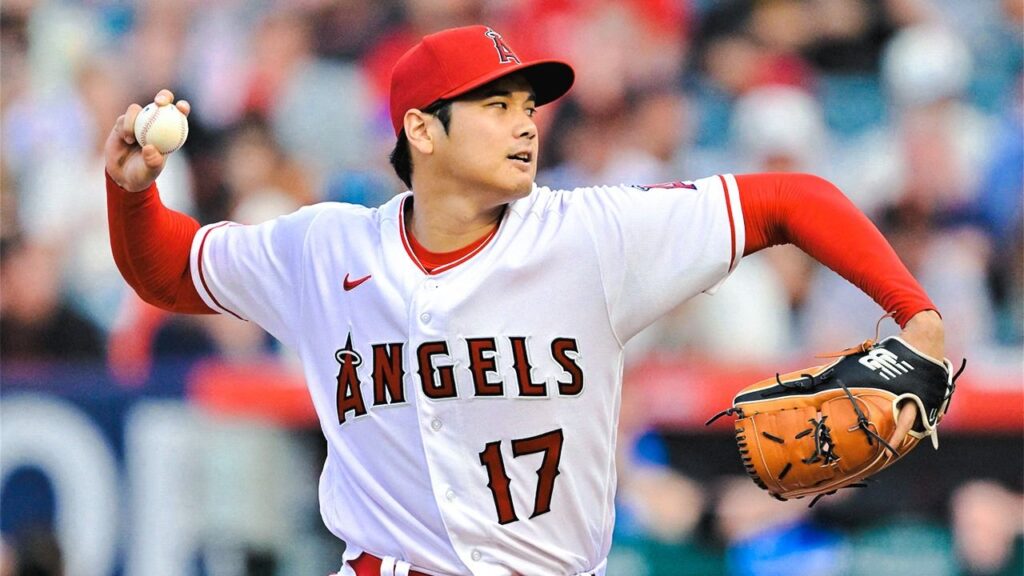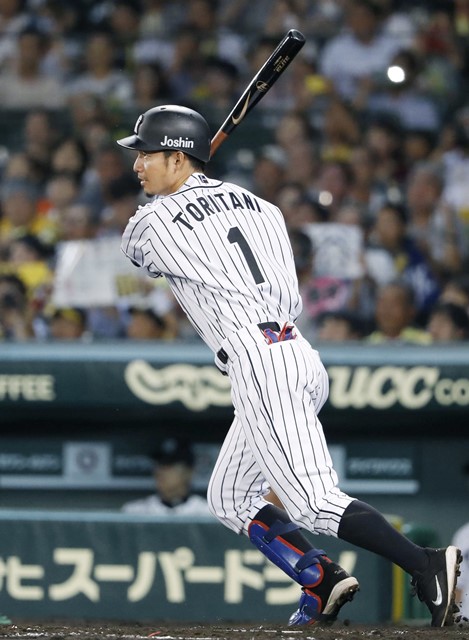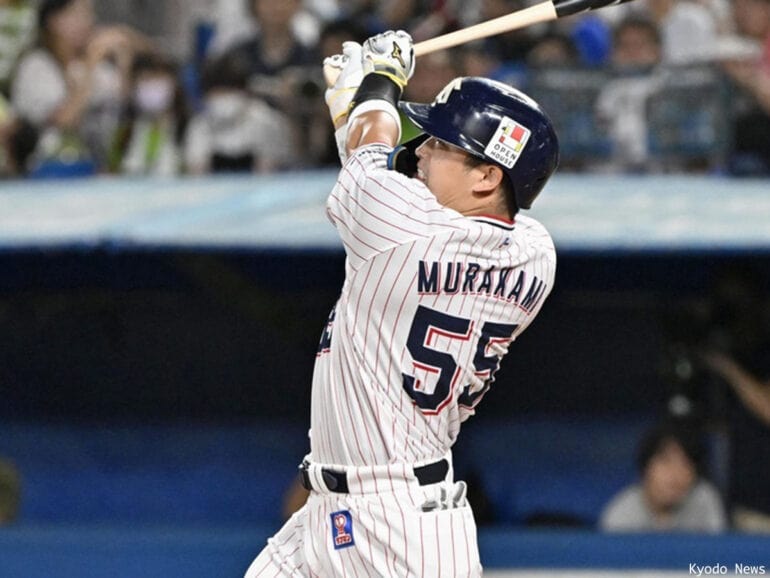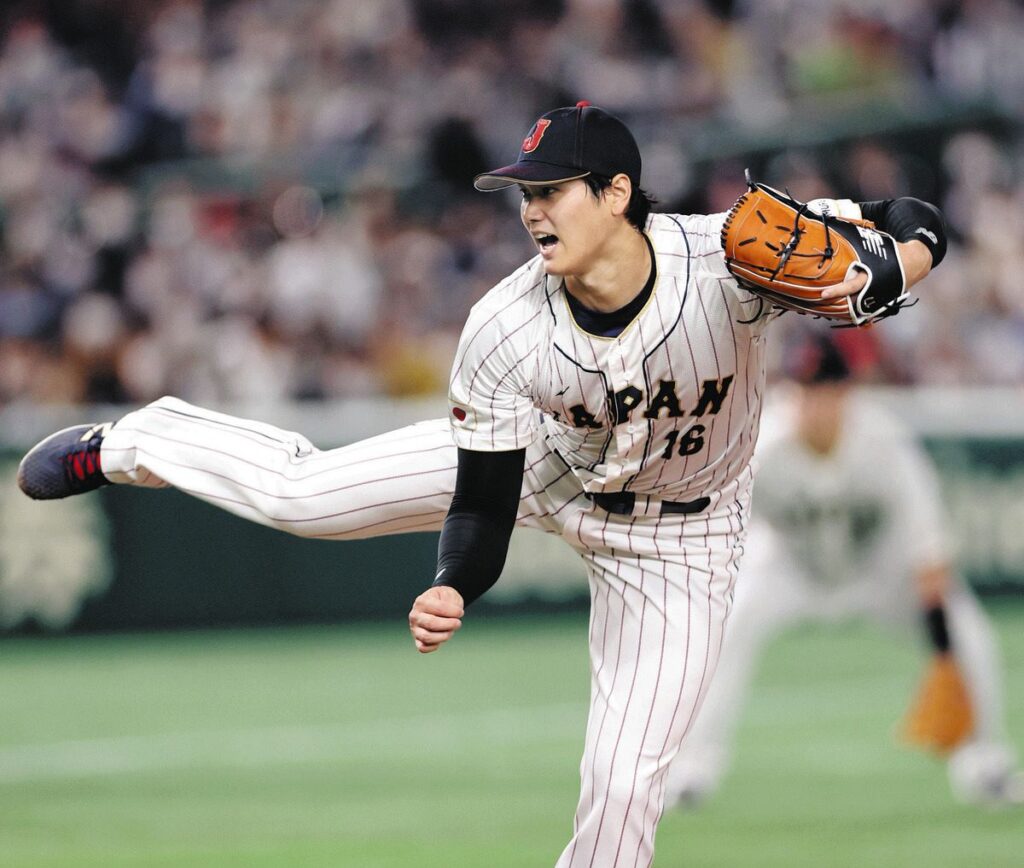
Shohei Ohtani is known for being able to handle a particularly wide variety of pitches among Japanese pitchers active in the Major Leagues.
His pitching technique consists of making full use of a variety of pitches, including fastballs, sliders, curveballs, forkballs, cut balls, and changeups.
By effectively combining these pitches, he maintains an advantage over batters.
In this article, we will provide a detailed explanation of Shohei Ohtani’s pitches, and delve into the ratio and characteristics of each pitch type.
We will also discuss how his pitching technique has evolved and his future prospects.
By knowing Ohtani’s various pitch types and their pitch percentages, you will be able to understand the depth of his pitching.
目次
- 1 Overview of Shohei Ohtani’s pitches
- 2 Straight power and its ratio
- 3 Features and usage of sliders
- 4 How to use curves and tactics
- 5 The importance of folkball
- 6 The role of cut balls and their effects
- 7 Strategic use of changeup
- 8 Other pitch types and their pitching percentages
- 9 Pitch combinations and pitching techniques
- 10 Evolution of pitch types and future prospects
Overview of Shohei Ohtani’s pitches

Straight power and its ratio
Shohei Ohtani’s fastball is one of the most important types of pitches he pitches, and its power and effectiveness threaten many batters.
We will explain in detail the speed and rotation speed of fastballs, as well as the pitching ratio and its effects.
Straight speed and rotation speed
Shohei Ohtani’s straights average speeds of 95-100mph (approximately 153-161km/h).
This speed is among the highest in the major leagues, making it an extremely difficult pitch for batters to hit.
In particular, Otani’s straights are known for their high rotational speed.
The average rotation speed is approximately 2400-2600rpm, which creates a “floating” trajectory on the straights.
This combination of high RPM and fastball makes timing difficult for batters.
Otani’s fastball extends at the hands of the batter more than expected, making it easier to miss the swing.
This causes many whiffs, fouls, and strikeouts.
Straight pitch percentage and its effect
Shohei Ohtani’s straight pitches account for approximately 40-50% of his total pitches.
This shows he uses it frequently as a reliable pitch.
By using fastballs frequently, combinations with other breaking balls become even more effective, expanding the range of attacks against batters.
One of the reasons the straight is used so often is its power and control.
Otani can freely manipulate fastballs and can freely throw between inside and outside corners, high and low.
This forces batters to always be on guard against fastballs and makes it difficult to respond to other types of pitches as well.
Furthermore, his pitching style is based on fastballs, which creates a synergistic effect with other breaking balls.
For example, by throwing a slider or forkball after showing a fast fastball, you can greatly deviate from the batter’s timing.
Additionally, because the rotation rate of a fastball is high, it is difficult to distinguish it from a breaking ball thrown from the same form, making it difficult for batters to respond to breaking balls while aiming for a fastball.
Effective use of fastballs is the foundation of Ohtani’s pitching and is a threat to many batters.
His fastball and high-speed fastball are among the most powerful in the major leagues, and have a great impact on the development of games.
This combination of various pitches centered around fastballs supports Shohei Ohtani’s pitching and is the key to his success.
By understanding the power and percentage of Shohei Ohtani’s fastballs, you can gain a deeper understanding of the depth and strategy of his pitching.
Using his fastball effectively will allow him to continue his success in the major leagues.

Features and usage of sliders
Shohei Ohtani’s slider plays an important role in his pitching repertoire.
This type of pitch is often used along with fastballs, and is a very troublesome curve ball for batters.
Below, we will explain in detail the characteristics of Shohei Otani’s slider and how to use it.
Slider trajectory and changes
Shohei Ohtani’s slider is a pitch that changes greatly laterally.
The speed is approximately 85-90mph (approximately 137-145km/h), and there is a speed difference of approximately 10mph (approximately 16km/h) compared to the straight.
This speed difference is one of the factors that disrupts the batter’s timing.
When Ohtani, a right-handed pitcher, throws his slider, the trajectory of the slider changes so that it slides significantly outward against right-handed batters and inward against left-handed batters.
This lateral change makes it difficult for batters to recognize when a slider is coming, causing them to swing late or off-center.
Additionally, Otani’s slider has a high rotational speed and exhibits sharp changes, which has the effect of inducing whiffs when batters swing the bat.
This trajectory and variation also comes from the fact that when Ohtani throws a slider, he makes the release point similar to a fastball, making it difficult for batters to distinguish.
It is difficult for batters to judge the type of pitch until the moment it is pitched, resulting in many whiffs and poor hits.
Slider pitch rate and impact on opposing batters
Shohei Ohtani’s slider pitches account for approximately 25-30% of his total pitches.
This percentage is part of his strategy to use his slider effectively and confuse batters.
Sliders are most effective when combined with straights.
By using sliders frequently, Ohtani is able to keep batters aware of the possibility of multiple breaking balls.
. The slider is especially effective in situations where you are gaining a count or finishing off a batter.
For example, by throwing a slider at a count of 0-2 or 1-2, you can induce a whiff and get a strikeout.
Also, sliders are used depending on the type of batter you are facing.
For right-handed batters, a slider that runs low to the outside corner is effective, and batters often chase this ball and miss.
On the other hand, against left-handed batters, you can use a slider that curves sharply to the inside corner to clog them up or force them to ground out.
Additionally, Ohtani’s slider is used effectively in conjunction with other breaking balls.
For example, by throwing a forkball after a slider, the batter will be further mistimed and the bat will often swing late.
In this way, the slider plays an important role in Ohtani’s diverse pitching repertoire.
Overall, Shohei Ohtani’s slider is a pitch that is extremely difficult for batters to hit due to its sharp changes and high pitch rate.
By using this pitch effectively, Ohtani has been able to strike out many batters and continue to have success in the major leagues.

How to use curves and tactics
Shohei Ohtani’s curveball is one of the most effective pitches in his pitching repertoire.
We will explain in detail the speed and amount of change in the curve, and its impact on pitching percentage and game development.
Curve speed and amount of change
Shohei Ohtani’s curveball has a perfect balance of speed and change, making it a very difficult pitch for batters to hit.
The speed of Otani’s curves is approximately 75-80 mph (approximately 121-129 km/h), which is noticeably slower than the straights and sliders.
This speed difference is a factor that greatly disrupts the batter’s timing.
The characteristic of the curve is its large vertical change.
Otani’s curve follows a steeply downward trajectory, causing the ball to sink significantly the moment the batter swings.
This makes it easier for batters to miss the timing to hit the ball with the bat.
In particular, curves that fall in a high arch can easily pass under the ball even when the batter swings, leading to whiffs and pop flies.
This amount of change can be made more effective by adjusting the release point.
By throwing curveballs from the same release point as his fastballs, Ohtani makes it difficult for batters to distinguish between different types of pitches.
This makes it difficult for batters to predict when a curveball is coming, and they are often slow to react.
Curve pitch percentage and its impact on game development
Shohei Ohtani’s curveball pitches account for approximately 10-15% of his total pitches.
Although this percentage is small compared to other major pitches, it is used effectively in important moments of the game.
In particular, curveballs are often used as decisive balls to change the flow of the game.
The reason why the ratio of curveball pitches is small is to maximize its effect.
A curveball can be even more effective when combined with a fastball or other breaking ball.
For example, by throwing a curveball after throwing a number of fast fastballs and sliders, you can throw off the batter’s timing and induce a strikeout or a grounder.
Curves are also used as pitches to gain an advantage in counts. By throwing a curveball after two strikes, batters are less able to predict the fastball in the strike zone and are slower to react to the curve.
This increases your chances of getting a strikeout.
In terms of game development, Otani’s curveball is particularly effective in pressure situations.
For example, by throwing a curve ball when a runner is in scoring position or at a critical moment in the final stages of a game, you can shake up the batter’s psychology and cause him to make a missed shot.
Curves are also effective against the opposing team’s strong hitters, and especially when combined with sliders and forkballs, a variety of attack patterns can be developed.
Shohei Ohtani’s use of the curveball and tactics focus on using the amount of change and speed difference to disrupt the batter’s timing.
By using this pitch effectively, he is able to strike out many batters in the major leagues and turn the flow of the game in his favor.

The importance of folkball
Shohei Ohtani’s forkball plays a particularly important role in his pitching repertoire.
This type of pitch is very effective as a deciding pitch to strike out a batter.
Below, we will explain in detail the mechanism of the forkball, its pitching ratio, and its role as a deciding ball.
Forkball mechanism
A forkball is a type of pitch that produces a large difference in pitch due to its unique grip and throw method.
Shohei Ohtani’s forkballs are typically thrown at speeds of 85-90 mph (approximately 137-145 km/h) and follow a rapidly sinking trajectory.
Due to this large drop, the ball sinks the moment a batter swings the bat, often leading to whiffs or ground balls.
The way to grip a forkball is deeper than a normal fastball grip, with your fingers pinching near the center of the ball.
This grip reduces the rotation of the ball when pitching, creating the effect of a sudden drop due to air resistance.
Also, by making the release point similar to a fastball, it becomes harder for batters to recognize when a forkball is coming.
Otani’s forkballs are difficult for batters to distinguish, especially since his arm speed is fast at the time of release and he is thrown with the same motion as a fastball.
This characteristic makes the forkball even more effective.
Forkball pitch ratio and role as a deciding ball
Shohei Ohtani’s forkball pitches account for approximately 20-25% of his total pitches.
This percentage indicates that he frequently uses forkballs as a deciding ball.
Forkballs are often used to finish off batters, especially on counts of two strikes.
Effective use of the forkball is extremely effective as a means of getting strikeouts during critical moments of the game.
For example, by throwing a forkball when a runner is in scoring position or under pressure at the end of a game, you can make the batter whiff and get out of a pinch.
Also, forkballs can be very effective when used in combination with other pitches.
For example, by throwing a forkball after throwing a fastball off the batter’s timing, the batter will not be able to adjust to the speed difference and change, increasing the probability of whiffing.
This makes the forkball a powerful weapon for striking out batters.
How to use a forkball is to throw a forkball after gaining a count with a fastball or slider to throw the batter off balance and maximize its effectiveness as a deciding ball.
In particular, Otani’s forkballs sink vertically, making it easy for batters to miss the center of their bats, often resulting in weak batted balls.
Shohei Ohtani’s forkball has become an essential element of his pitching style due to its unique mechanics and effective usage.
By making full use of this pitch, Ohtani has been able to strike out many batters and continue to have success in the major leagues.
By understanding the importance of the forkball, you will be able to understand the depth of his pitching technique.

The role of cut balls and their effects
Shohei Ohtani’s cut ball plays an important role in his pitching repertoire.
This type of pitch is difficult for batters to distinguish, making it a very effective weapon.
Below, we will explain in detail Shohei Ohtani’s characteristics of cut balls, pitching methods, pitching ratios, and responses to opposing batters.
Characteristics of cut balls and pitching methods
A cut ball is a pitch that is thrown with a trajectory similar to a fastball, but can be cut laterally due to a subtle change in the release point.
Shohei Ohtani’s cut balls are thrown at speeds of approximately 88-92 mph (approximately 142-148 km/h) and exhibit sharp lateral changes.
This speed is almost the same as a fastball, making it difficult for batters to distinguish.
Gripping a cut ball is similar to a straight grip, but by slightly shifting the position of the fingers gripping the ball, the rotation of the ball changes and changes laterally when pitching.
Otani is able to effectively throw cut balls by fine-tuning his arm swing while keeping his release point the same as his straight ball.
This characteristic makes it difficult for batters to distinguish between straight balls and cut balls, and they often miss the center of the bat.
The lateral change of a cut ball can also destroy a batter’s bat.
In particular, cut balls that cut sharply into the inside corners often cause batters to break their bats, leading to weak ground balls and foul balls.
This effect makes it difficult for batters to hit effectively against cut balls.
Pitching percentage of cut balls and response to opposing batters
Shohei Ohtani’s cut balls account for approximately 15-20% of his total pitches.
This percentage shows that he uses cut balls effectively and utilizes them to increase variation in his attack against batters.
Cut balls are especially used in combination with straight balls to maximize their effectiveness.
The use of cut balls is done strategically depending on the type of batter being faced and the match situation.
Against right-handed batters, he often uses cut balls that bite into the inside corners, and sharp changes in the batter’s hands that cause the bat to break or jam.
For left-handed batters, by using a cut ball that escapes to the outside corner, you can induce a weak ball that hits the tip of the bat.
Cut balls are also effective as pitches for gaining counts.
When a cut ball is aimed at the four corners of the strike zone, it is difficult for the batter to determine whether it is a strike or a ball, and as a result, there are many situations in which a strike can be taken.
This makes it easier for Ohtani to create counts that drive batters.
Cut balls are often used in particularly important situations during a match.
For example, in a pinch or when a runner is in scoring position, throwing a cut ball can increase the pressure on the batter and allow him to hit the batter more effectively.
As such, cut balls have become an essential element of Ohtani’s pitching strategy.
Overall, Shohei Ohtani’s cut ball is a very troublesome pitch for batters due to its characteristics and pitching method.
By effectively using this type of pitch, Ohtani is able to strike out many batters and turn the game in his favor.
By understanding the role of cut balls and their effects, you will be able to gain a deeper understanding of the depth of his pitching techniques.

Strategic use of changeup
Shohei Ohtani’s changeup is one of the most important pitches in his pitching repertoire.
This pitch type is used strategically to mistime the batter and induce whiffs and weak batted balls.
Below, we will explain in detail the speed differences and changes in changeups, their pitching ratios, and how to use them effectively.
Changeup speed difference and change
Shohei Ohtani’s changeup has a speed difference of about 10-15 mph (about 16-24 km/h) compared to the straight.
A fastball is thrown at a speed of 95-100 mph (approximately 153-161 km/h), while a changeup is thrown at a speed of approximately 80-85 mph (approximately 129-137 km/h).
This speed difference is the main factor that throws off the batter’s timing.
The changeup is characterized by its slow speed and the sinking change of the ball.
Otani’s changeup is difficult for batters to distinguish because it is thrown from the same release point as his fastball, and the ball appears to sink rapidly in his hands.
Due to this sinking change, batters are often forced to whiff or weak ground balls that pass under the bat.
In addition, when a changeup is timed with a fastball, the speed difference causes the batter to swing faster, which has the effect of causing the batter to hit the top of the ball and induce a grounder.
This combination of speed difference and change is the changeup’s greatest strength.
Changeup pitching ratio and how to use it effectively
Shohei Ohtani’s changeup pitches account for approximately 10-15% of his total pitches.
This percentage shows that while the changeup is by no means a mainstay pitch, it is used as an effective weapon in important situations.
Changeups are often used especially in situations where the count is advantageous or as a deciding ball to finish off a batter.
An effective way to use a changeup is to combine it with a fastball or slider.
For example, by speeding up the batter’s timing with a fast fastball and then throwing a changeup, the batter will swing faster, resulting in whiffs and weaker batted balls.
Also, by adding a vertical change with a changeup after showing a horizontal change with a slider, you can shift the batter’s line of sight and miss his timing.
Additionally, changeups are especially effective against left-handed hitters.
Otani’s changeup has a trajectory that sinks into the inside corner of left-handed batters, making it an extremely difficult pitch for left-handed batters to hit.
This allows him to use a lot of changeups and get strikes against left-handed batters.
In the development of a game, the changeup is also effective when pitching in relief or playing the role of a closer.
If the batter is timing his fastball or slider, mixing in a changeup can disrupt the batter’s rhythm and allow him to strike out at a critical moment.
Overall, Shohei Ohtani’s changeup is an effective pitch that throws off the batter’s timing due to its speed difference and change.
Although the pitch rate is lower than other pitches, it maximizes its effectiveness when used strategically.
Understanding the strategic use of his changeup will help you understand the depth and versatility of his pitching.

Other pitch types and their pitching percentages
Shohei Ohtani’s pitching repertoire includes major pitches such as fastballs, sliders, curveballs, forkballs, cut balls, and changeups, as well as rare pitches such as sinkers and knuckle curves.
These pitches are used strategically against specific situations and batters, making his pitching more diverse and effective.
Below, we’ll explain in detail the characteristics, pitch percentages, and strategic uses of these rare pitches.
Rare pitches such as sinkers and knuckle curves
Sinker A sinker is a type of pitch that Ohtani occasionally uses, and it changes so that the ball sinks in his hands. This type of pitch is particularly effective in inducing ground balls by passing under the batter’s bat. The speed of the sinker is 85-90mph (approximately 137-145km/h) and is characterized by vertical changes. This change often causes batters to think the ball will stay in the strike zone, only to end up hitting a grounder that slips under the bat.
Knuckle Curve A knuckle curve is a type of pitch that changes more rapidly than a normal curve, and because the ball is thrown as if flicking with the knuckles at the time of release, it exhibits a unique change. This type of pitch is thrown from the same release point as a fastball, so it is difficult for batters to distinguish, and the sudden vertical changes can lead to whiffs and poor hits. The speed of the knuckle curve is 70-75 mph (approximately 113-121 km/h), which is slower than other pitches, so it has the effect of throwing off the batter’s timing.
Pitching percentage and strategic use of each pitch type
Shohei Ohtani’s percentage of sinker and knuckle curve pitches is relatively low at around 5% or less of his total pitches, but they are used effectively in certain situations.
These pitches are used as surprises for batters and have the effect of subverting predictions.
Strategic use of sinkers Sinkers are used especially in situations where you want to induce ground balls. For example, when aiming for a double play with a runner in scoring position, or when you want to get an important out, you can force the batter to hit the ball low by throwing a sinker. Also, by throwing the sinker into the inside corner of a right-handed batter, it has the effect of clogging up the batter’s hands and producing a weaker batted ball.
Strategic Use of Knuckle Curves Knuckle curves are used to greatly miss the batter’s timing. In particular, by throwing a knuckle curveball after gaining a count with a fastball or slider, you can shift the batter’s line of sight and induce a whiff. The knuckle curve is especially effective against left-handed batters, with the abrupt vertical change making it easier for batters to pass under the bat.
Also, the knuckle curve is often used as a deciding ball in important situations towards the end of the game.
By throwing a knuckle curveball after driving in with a fastball or slider, you can prevent the batter from getting the last hit and get a strikeout.
In this way, the knuckle curve is a very troublesome pitch for batters to use as a deciding ball in important situations.
Overall, Shohei Ohtani’s rare pitches like sinkers and knuckle curves make his pitching more diverse and unpredictable.
By strategically using these pitches, Ohtani is able to strike out many batters and advance the game to his advantage.
By understanding the percentage of rare pitches he throws and how to use them effectively, you will be able to gain a deeper understanding of the depth of his pitching techniques.

Pitch combinations and pitching techniques
Shohei Ohtani uses a variety of pitches to confuse batters and develop effective pitching.
His pitching technique is built on a combination of pitches and a game plan, which allows him to strike out many batters.
Below, we will explain in detail the confusion of batters caused by pitch combinations, as well as Shohei Ohtani’s pitching technique and game plan.
Batter’s confusion due to pitch combinations
The key to Shohei Ohtani’s success is effectively combining his various pitches.
Using a variety of pitches, such as fastballs, sliders, curveballs, forkballs, cut balls, and changeups, makes it difficult for batters to predict which pitch is coming next.
This can cause the batter to miss their timing and cause them to whiff or hit the ball weakly.
For example, by speeding up the batter’s timing with a fast fastball and then throwing a changeup with a speed difference, the batter will swing early, resulting in more whiffs and ground balls.
In addition, after showing horizontal changes with sliders and cut balls, he throws curveballs and fork balls that fall vertically, which shifts the batter’s line of sight and makes it difficult for the batter to respond.
Ohtani’s inconsistent release point also adds to the confusion for hitters.
Because he throws fastballs and breaking balls from the same release point, batters have difficulty identifying the type of pitch, and often end up swinging until the last minute, believing that a fastball is coming.
This delays the response to breaking balls, leading to whiffs and weak batted balls.
Shohei Ohtani’s pitching technique and game plan
Shohei Ohtani’s pitching technique is based on situational game plans.
Before a game, he analyzes data on opposing batters and plans the optimal pitch type and distribution pattern for each batter.
This allows you to develop effective pitches during a match.
For example, for power hitters, it is effective to clog them with a fastball with a high inside angle, or to mistime the ball with a curveball with a low outside angle.
Against these batters, Ohtani uses a combination of fastballs and sliders to prevent batters from swinging as they wish.
Also, against contact hitters, he often uses curveballs and change-ups to weaken the ball and induce mediocre hits.
Ohtani’s pitching technique also has flexibility depending on the match situation.
For example, in a situation where a runner is in scoring position, the tactic is to gather the sinker or cut ball low in order to aim for a double play and force the ball to hit a ground ball.
Also, if you need to get a strikeout in a critical situation, you can use a forkball or knuckle curve to finish off the batter.
Adjustments during games are also part of Ohtani’s pitching technique.
If a batter starts reacting to a particular pitch, he has the ability to quickly switch to another pitch to react.
This allows you to always maintain an advantage over batters.
Overall, Shohei Ohtani’s pitch combinations and pitching techniques are important factors for confusing opposing batters and dominating games.
His versatile pitches and strategic game plan have allowed him to continue to have success in the major leagues.
By understanding these elements, you will be able to better understand the depth and versatility of his pitching.

Evolution of pitch types and future prospects
Shohei Ohtani’s pitching has constantly evolved throughout his career.
By introducing new pitches and improving existing ones, he has developed a diverse and effective pitching style.
Below, we will provide a detailed explanation of Shohei Ohtani’s evolution and improvement of his pitches, as well as his future goals and further diversification of his pitches.
Evolution and improvement of Shohei Ohtani’s pitches
Since Shohei Ohtani turned pro, he has constantly introduced new pitches and improved existing pitches.
His straight has become an even more effective weapon by increasing the number of rotations while maintaining its original speed and power.
In addition, by fine-tuning the release point and grip of the slider and curve, we are now able to create sharper changes.
The forkball is one of the pitches that Otani put a lot of effort into improving after turning professional.
Early forkballs had relatively shallow sinking, but by improving the grip and release timing, they have now become a winning ball with a large drop.
In addition, the introduction of cut balls has increased the variety of attacks against batters, and when used in combination with fastballs, it has become even more effective.
In recent years, Ohtani has also been working on improving his changeup.
This pitch type is an important weapon to use speed differences and changes to mislead the batter’s timing, and in combination with the fastball, it can be used to toy with batters.
He has been able to adjust his grip on his changeup to create more effective velocity differentials and variations.
Future goals and further diversification of pitches
Shohei Ohtani’s future goal is to increase the variety of his pitches by further improving existing pitches and introducing new pitches.
His variety of pitches is a key element in maximizing his effectiveness against batters, and the introduction of new pitches will further strengthen that strategy.
For example, Ohtani may work on improving his knuckle curve.
This pitch is already in his repertoire, but he could make adjustments to his grip or pitching form to create even more effective variations.
Additionally, the introduction of sinkers and split-finger fastballs (SFF) as new breaking balls may be considered.
This increases pitch variation and allows you to maintain an advantage over batters.
Ohtani’s goal is to constantly improve himself in order to maintain long-term success in the major leagues.
He utilizes the latest pitching data and analytical techniques to optimize his pitching style.
Through training and feedback, he is constantly learning new techniques and tactics to improve the quality of his pitching.
Furthermore, Ohtani is also focusing on strengthening his physical strength.
Diversifying your pitches also has the effect of dispersing the burden on your shoulders and elbows, which can reduce your risk of injury.
This will allow him to continue playing at a high level for longer.
Overall, the evolution of Shohei Ohtani’s pitching and future prospects are important factors that will further strengthen his pitching style and support further success in the major leagues.
His constant effort and self-improvement attitude will keep him among the top pitchers and will continue to produce great results in his career.
